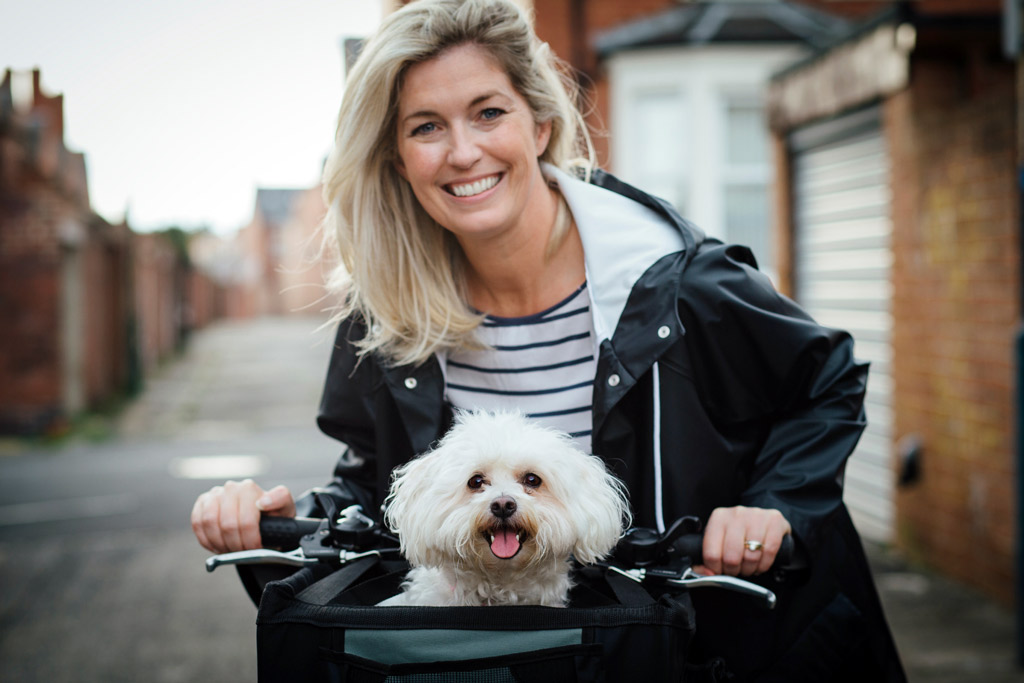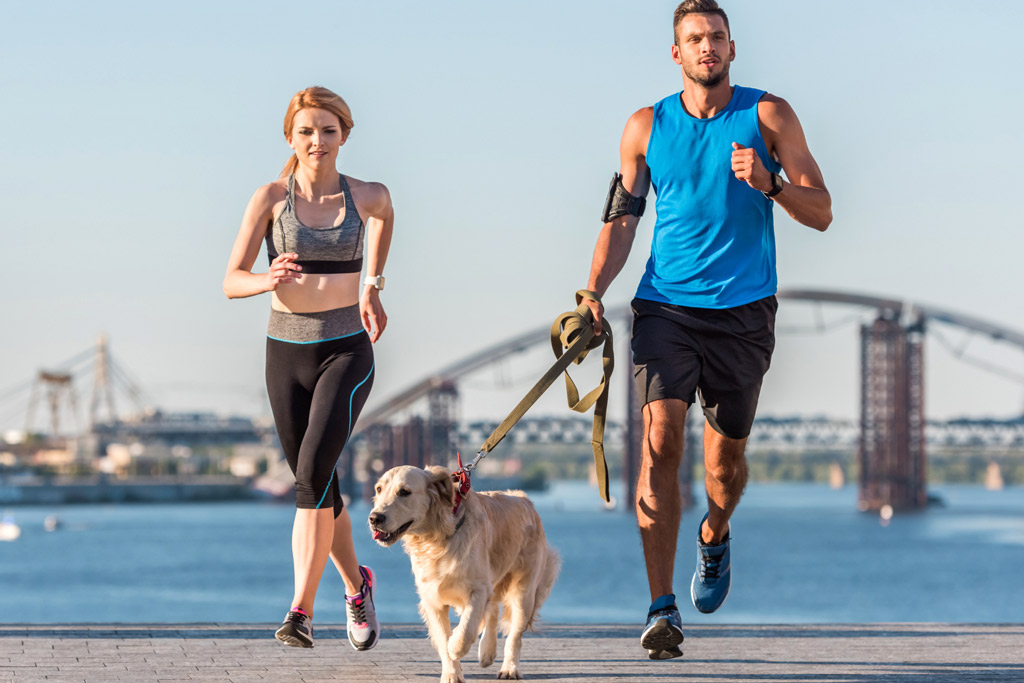
There are plenty of activities that we can do to exercise our dogs and even to exercise together.
But before diving into naming them…
For fun and profitable exercise sessions, every dog parent needs to understand their dog’s exercise needs and preferences first.
Also, safety and training come hand in hand when introducing a new activity to your pooch.
So, let’s dive into the details of dog exercise!
Dog Exercise Needs
Why do dogs always need to be exercised?
Exercise is one of the five dog care pillars for your dog’s welfare. No matter how big or small your dog is, or how young or old, they all need exercise to maintain their health.
Regular exercise helps your dog to:
- Have good physical and mental health (also referred to as stimulation).
- Widen their experiences, crucial for socialization and their behavioural development.
- Expend their energy, so they can be more chilled at home.
- Reduce unwanted behaviours related to boredom and anxiety.
- Maintain cardiovascular health.
- Strengthen the bond towards you.
- And last but not least, have fun!
So, what happens when you don’t exercise your furry friend?
A lack of sufficient mental and physical stimulation can lead to various health and behavioural problems such as:
- Restlessness and boredom.
- Destructive chewing.
- Over-excitability and rough play.
- Depression.
- Frequent barking or whining.
- Obesity and lethargy.
- Escaping or digging.
- Irritability.
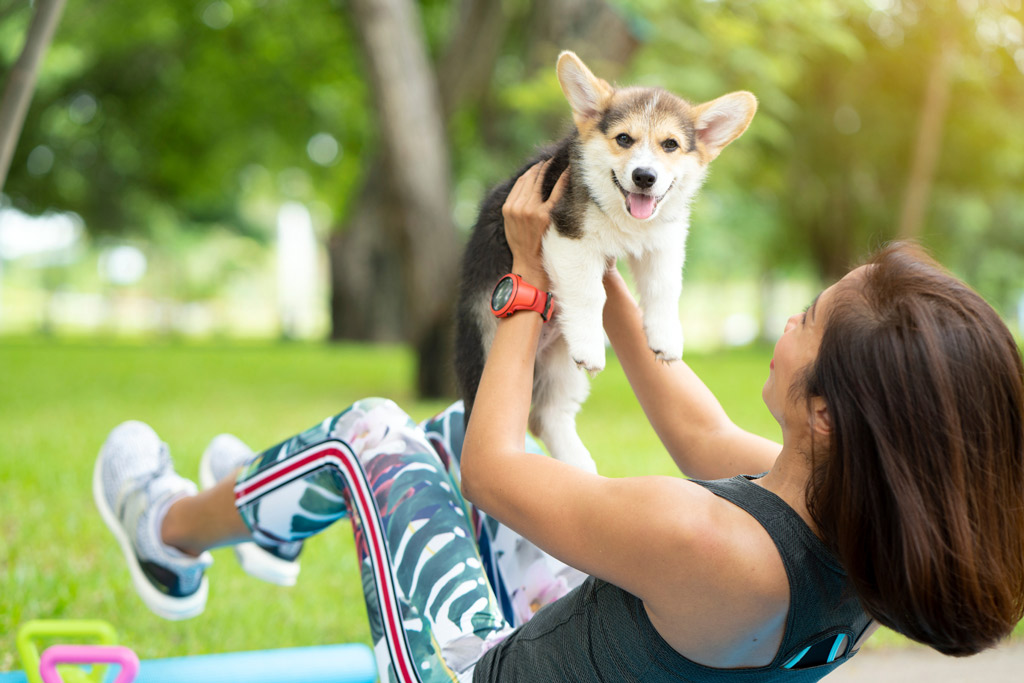
Of course, different dogs require different levels of activity:
Dog Exercise for Puppies
Puppies have a lot of energy but less stamina than an adult dog, i.e., they need more breaks.
These short exercise sessions should consist of training, walking and playing to keep your puppy mentally and physically stimulated.
According to The Kennel Club, you can exercise your pup a ratio of five minutes of exercise per month of age (up to twice a day) until your puppy is full-grown. This means 15 minutes of exercise up to twice a day when your pup is three months old, for example.
Dog Exercise for Adult Dogs
Generally, young and adult dogs have more energy than pups and senior dogs. That’s why they will need more exercise and playtime.
Adult dogs require at least between 30 minutes to 2 hours plus of exercise daily, depending on the breed.
Your dog’s breed plays a major role in how much exercise the dog needs on a daily basis. While age and health need to be considered, the breed is an indication of your dog’s general activity/energy levels.
Dog Exercise for Senior Dogs
Proper exercise is just as important for your senior dog as it is for your puppy or adult dog.
It’s just that as your dog ages, her exercise needs change, but they don’t disappear!
For instance, while walks should still be an important part of a senior dog’s life, these should shorten in length and be taken at a slower pace. Also, swimming can be good for her joints.
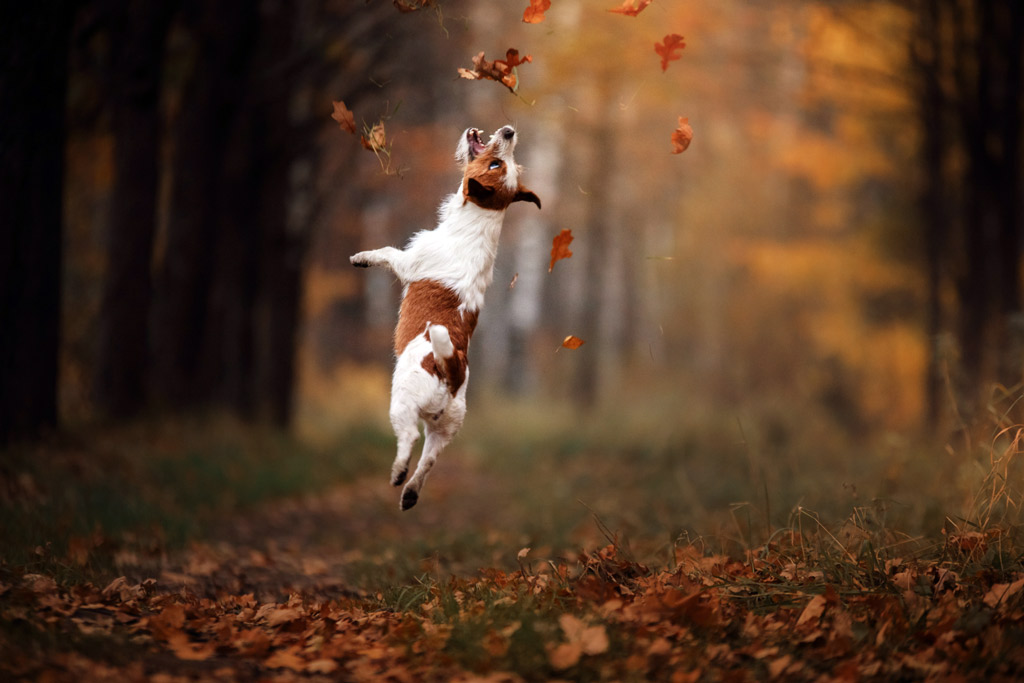
Dog Exercise Preferences
Depending on your dog’s breed and temperament, your pooch might be more inclined towards certain activities and play with certain toys.
On How to Choose a Dog Toy blog post, I go through the steps to help you select the right toy for your pooch.
As dog parents, discovering what games and toys your dog loves makes exercising her easier and more fun!
So what is your dog’s fav game?
| DOG GROUPS | BREEDS | SENSE, INSTINCT | GAME, ACTIVITY, TOY |
| The HoundGroup | Beagles, Dachshunds and Bassets. | Scent tracking and prey sighting. | Puzzle toys, chase or fetch. |
| The Herding Group | Collies, Shepherds, Corgis and Heelers. | Protecting livestock. | Flying disc, herding, obedience and agility. |
| The TerrierGroup | Jack Russells, Scotties, Staffordshires, Airedales, etc. | Pest control. | Tug, digging, puzzles and obedience. |
| The Non-Sporting Group | Bichons Frises, Boston Terriers, Dalmatians, Poodles, Lhasa Apsos, Bulldogs, Shiba Inus, etc. | No longer perform the duties for which they were originally bred. | Varies depending on the dog’s breed. |
| The Sporting Group | Pointers, Setters, Retrievers, Vizslas, etc. | Hunting dogs: finding, pointing, flushing, holding and retrieving game. | Fetch, swimming, walking and hiking. Also, therapy dogs, assistance dogs, and search and rescue dogs. |
| The Working Group | Alaskan Malamutes, Siberian Huskies Boxers, Akitas, Doberman Pinschers, Mastiffs, Great Danes, Dogues de Bordeaux, Rottweilers, Saint Bernards, etc. | Performing specific tasks for their owners. | Obedience and agility. |
| The Toy Group | Pekingese, Maltese, Chihuahuas, Miniature Pinschers,Papillons, Cavalier King Charles Spaniels, etc. | Companion. | Squeaky toys, tricks and games. |
Use the guide in my favourite dog toys for a complete range of toy option depending on breed traits and preferences.

Dog Exercise Safety
Now it’s time to address how to safely exercise your dog or puppy.
There are some safety precautions you should take when exercising with your pooch.
Before Exercise
Prior to exercising with your dog or puppy, here are some things to consider:
- Assess your dog’s exercise needs: Your dog’s breed, age, health and energy levels will determine your dog’s exercise needs. Adult dogs require between 30 minutes to 2 hours plus of daily exercise, depending on the breed. Also, you need to determine how often your dog needs to exercise daily. Some need 2 to 3 exercise sessions a day, including walks, training and playtime. Find out more in our How Often Should I Walk My Dog? and How Much Exercise Does a Dog Need? guides.
- Consider your dog’s physical and health status: Brachycephalic dogs like Pugs, French Bulldogs and Boston Terriers have short snouts. This physical attribute affects their breathing and their capability to regulate heat (i.e., they are prone to overheat). Also, senior dogs (in general) tend to have joint problems that can slow them down or make it uncomfortable to exercise.
- Check the temperature outside: Extreme temperatures can affect your pooch. Dogs can overheat if exercising in hot temperatures. So exercise in early morning and evening during warm months. But, dogs can suffer during cold weather too. Use our Dog Care during Vacations: Get Ready for Summer or Winter page to learn more.
- Follow a regular schedule: Following a regular schedule helps your dog anticipate and know what’s next. It also helps to keep a balanced day. For instance, you won’t be exercising your dog immediately before or after a meal (which can cause problems such as bloating).
- Take measures to prevent parasites: Talk to your vet about how to protect your dog from parasites that she can get outside. In Dog Parasite Prevention and Treatment, you will be able to know what the most common parasites that can affect your pooch are.
- Follow the vaccination schedule: To avoid possible health problems, follow your vet’s advice on vaccinations. This also comes in handy when exercising puppies since some vets don’t recommend letting your puppy exercise outdoors until they are fully vaccinated.
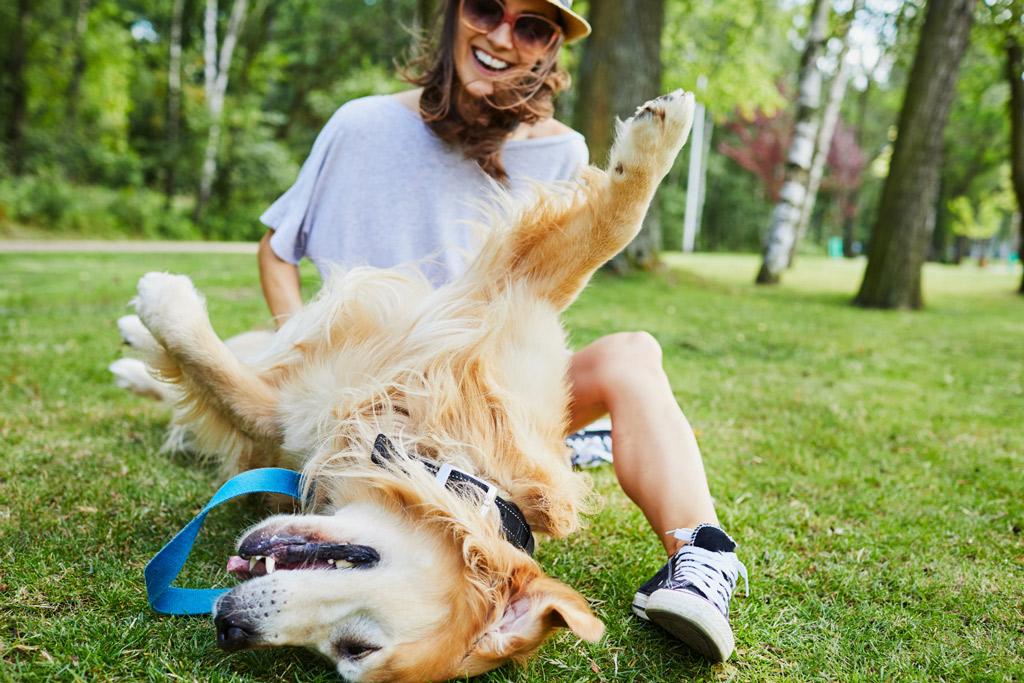
During Exercise
Here are some general tips to help you exercise your pooch safely:
- Paw protection: Long walks on rough surfaces can damage a dog’s paws if your dog hasn’t gradually gotten used to it and hasn’t developed thicker pads. So when you venture into rough terrain, dog booties (Amazon link) come in handy.
- On hot days, pavement, asphalt, or sand can burn your dog’s paw.
- On snowy days, check paws for ice build-up. Iced paths and snow can also injure your dog’s paws. If you’re walking in the snow, avoid roads that have been treated with salt as they can sting your dog’s feet. Plus, if she licks her paws she can get an upset stomach as well. Also, avoid antifreeze since it’s poisonous for dogs.
- Avoid these when exercising: You might not be aware but the following should be avoided:
- Jogging, running or very long walks with your puppy. Puppies shouldn’t walk more than 30min in total a day.
- Cycling with your dog alongside your bike is against road rules in some countries and it’s also dangerous. I suggest cycling in a trail in the countryside further down.
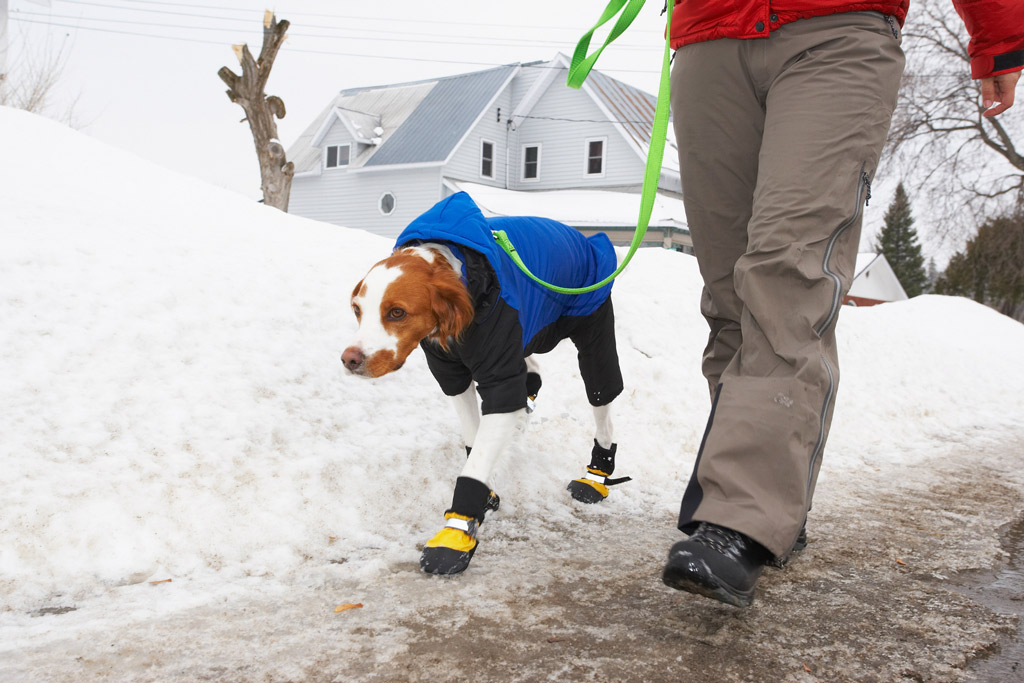
- Preventing overheating: Just like us, dogs are susceptible to dehydration and heat exhaustion. This overheating can lead to heatstroke if you are not careful. Here’s how to prevent it:
- Watch out for signs of fatigue, such as panting, slowing their pace, staying behind you or stopping. If you notice this, allow your pooch to rest in a cool, shaded area.
- Keep your doggy hydrated, especially on hot days. Offer your dog some water to drink at regular intervals during exercise. You can use a collapsible bowl or a bottle with a special spout for dogs. Signs of dehydration in dogs include excessive panting, confusion, weakness, and collapse. Remember that brachycephalic dogs are especially vulnerable to heat.
- Avoid exercising at noon during warmer months. A dog only sweats through their pads and they lose body heat through panting, so exercise in the morning or late evening when the temperature is cooler.
- If you think your dog is having a heat stroke, you need to act fast. Take her to a shaded area. Then, refresh your dog’s head, neck and chest with water or a soaked towel. Encourage her to drink water or lick an ice cube. Finally, take her to the vet since a heat stroke can be a life-threatening emergency.
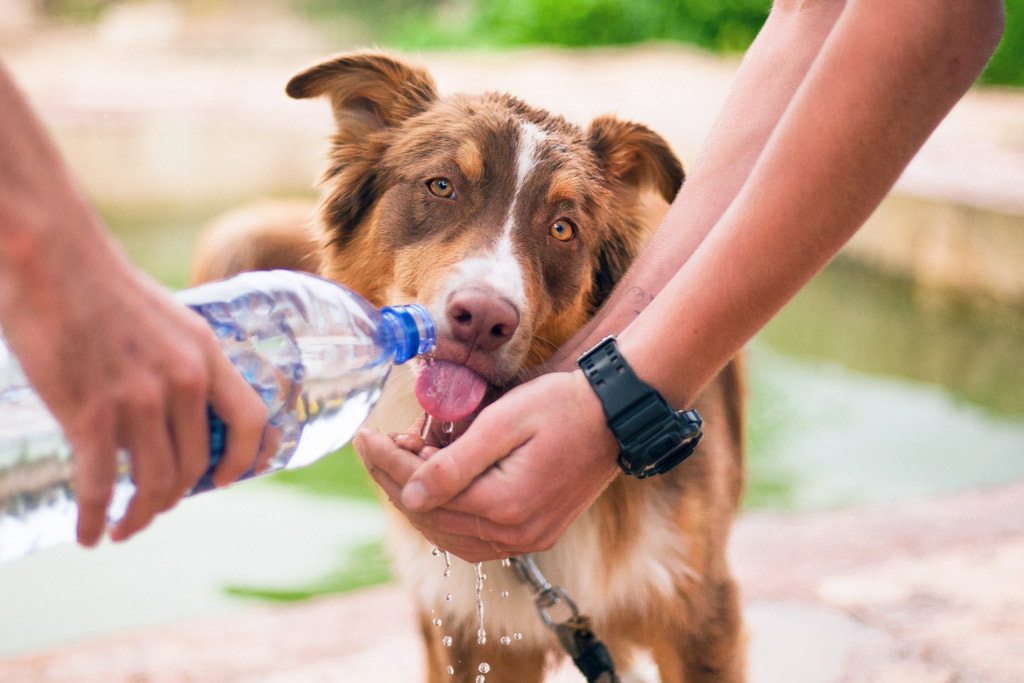
- Exercising on the leash: Before exercising your dog off-leash, you need to train your dog to walk on a leash. The goal is for your dog to walk beside you and be more interested in you than anything else. Using our Dog Training 101 guide, you will more easily gain insight on how to approach leash training.
- Exercising off the leash: This is another way to let your pooch get the exercise she needs, especially when she responds well to recall command. However, here’s what to have in mind when your dog is off-leash:
- Only allow your dog to run freely in a safe environment, such as your backyard or a designated dog park.
- Always keep an eye on your dog and what surrounds her, including other dogs.
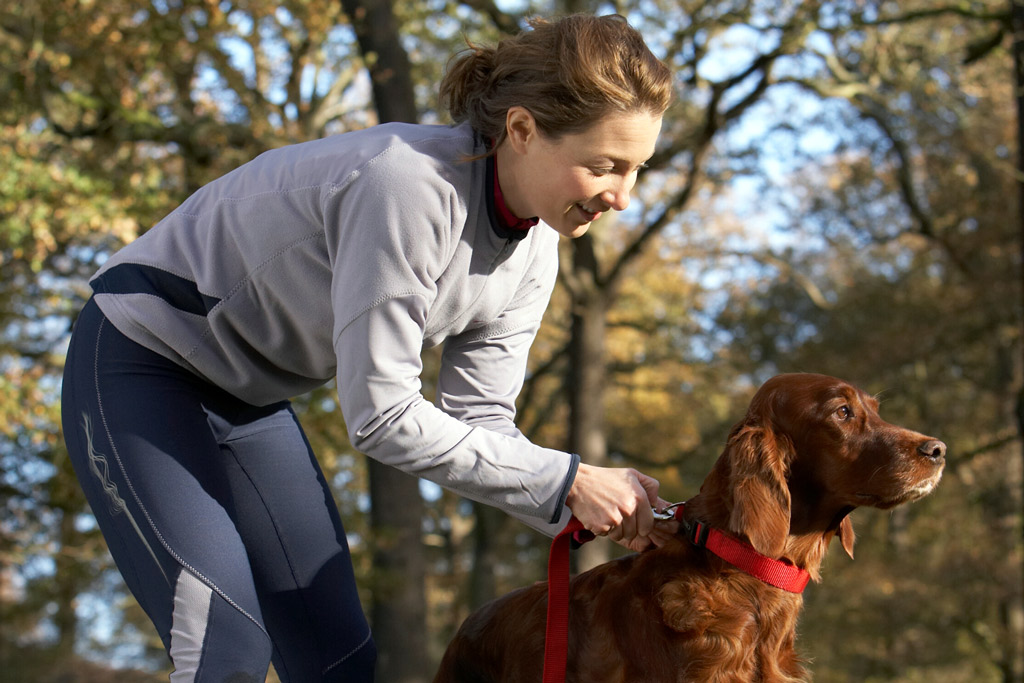
After Exercise
After exercising with your furry friend, you will need to:
- Offer your dog some fresh water.
- Then, allow her to rest.
- After she’s calm and rested, give her some food.
The goal of these recommendations is to ensure your dog’s safety when it comes to exercise, but also to keep your pooch healthy and happy for years to come!
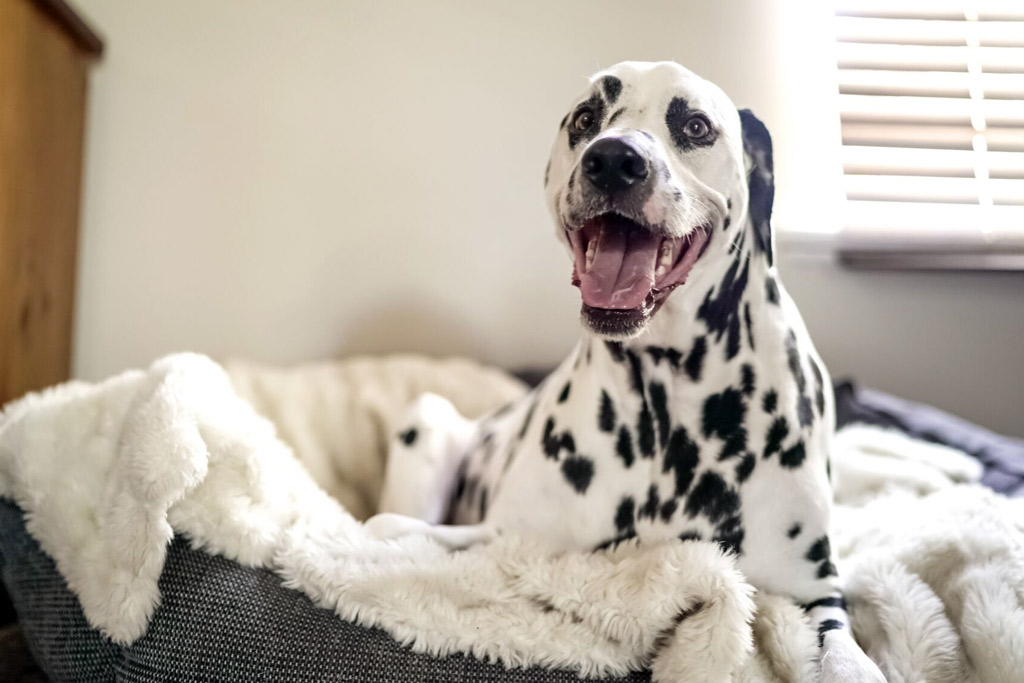
Activities for Exercising Your Dog
There are many activities for exercising your dog, some more intense than others.
Have you ever noticed that your dog is quite energetic after a brisk walk but completely drained after a short training session?
That’s because just 10-15 minutes of mental stimulation, (an activity that requires your dog to concentrate and process information), is as physically exhausting as a half-hour of moderate exercise like walking or playing.
Playing with your dog and training her is a great way to keep your furry friend mentally and physically stimulated. Plus, apart from spending quality time together, it is a great opportunity to reinforce basic obedience, practice commands, and strengthen the bond you share.
Dog Exercise Indoors and Outdoors
Depending on your dog’s energy level, there are a variety of activities she can take part in outdoors and indoors.
- Low-Impact Exercise:
- Walking.
- Moderate Exercise:
- Jogging.
- Hiking (flat trail).
- Playing fetch.
- Strenuous Exercise:
- Running.
- Hiking (with hills).
- Swimming.
- Playing a more intense game of fetch.
- Agility training.
- Mentally Stimulating Exercise:
- Taking a new walking route.
- Training sessions.
- Learning a new trick.
- Playing with interactive toys.
- Scent games.
- Agility training.
All covered in these guides: Dog Exercise Indoors and Dog Exercise Outdoors

Exercise Together
There are loads of activities that you and your dog can do together to keep you both fit and healthy. 😉
#1 – Walking
Never underestimate the power of walking!
Daily walks are a simple way to introduce movement in your life and engage your whole body.
Plus, a brisk walk is a great opportunity to get rid of your dog’s extra energy and for your pooch to engage in sniffing around and exploring new places, making use of one of their primary senses – smell.
Insider Tip: A slow walk where you let you pooch sniff for as long as she wants is also a great way to keep her mentally stimulated.
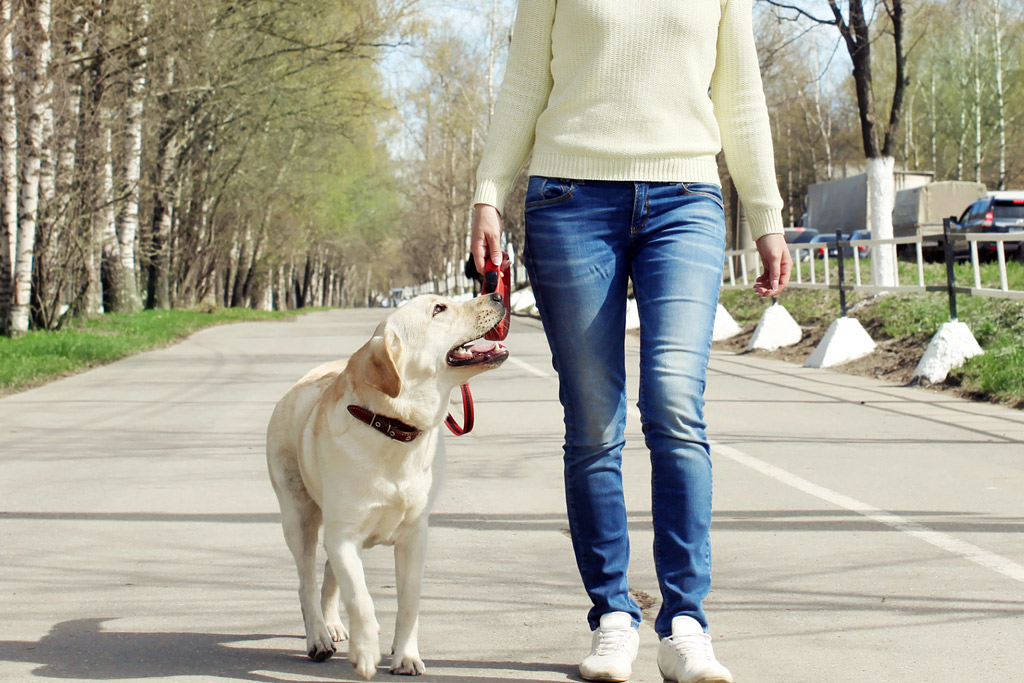
#2 – Playing
Playtime is a fun way to bond with your pooch and also teaches us to continue to be playful regardless of our age.
Additionally, dog games are a great source of mental and physical stimulation for your furry friend.
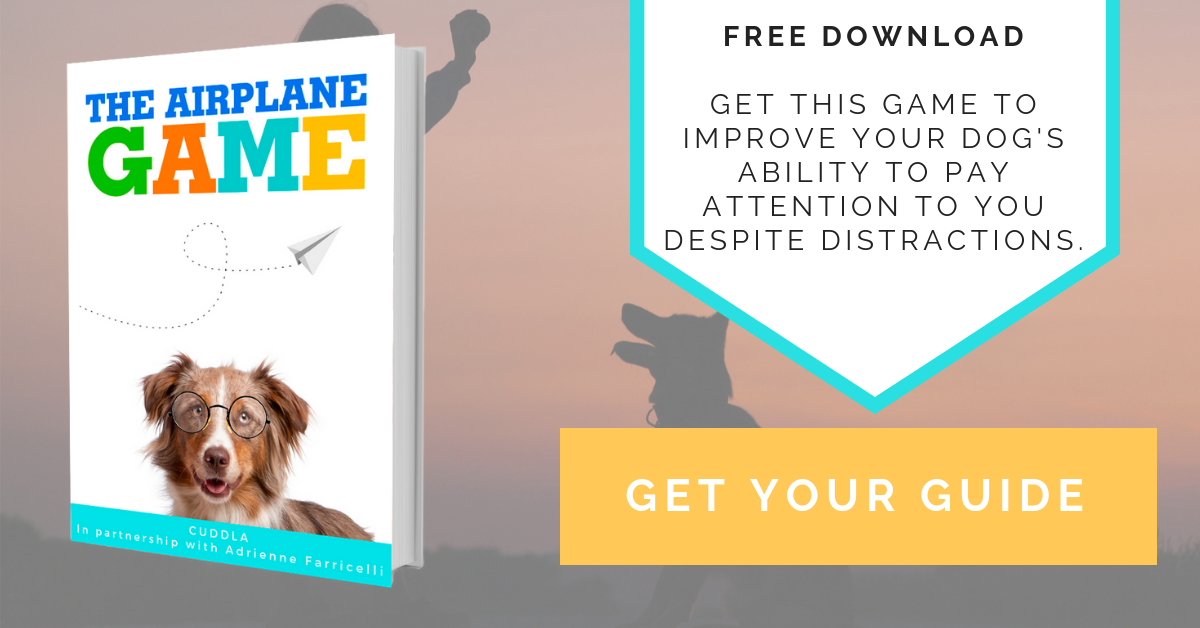
Apart from games like fetch and tug, brain games keep your dog’s mind engaged and sharp throughout her life. With these games, you teach her new skills and increase her intelligence.

#3 – Jogging and Running
The faster your doggy is moving, the more energy she releases.
Some dogs enjoy short sprints or light jogging, others love running for long distances. And some don’t like running at all! Like our Tootsie, a pug that we fostered.
It all depends on your dog’s energy levels, stamina and character.
Some dogs can gradually increase their tolerance and join you on your daily run. Just make sure that your pooch can take it!
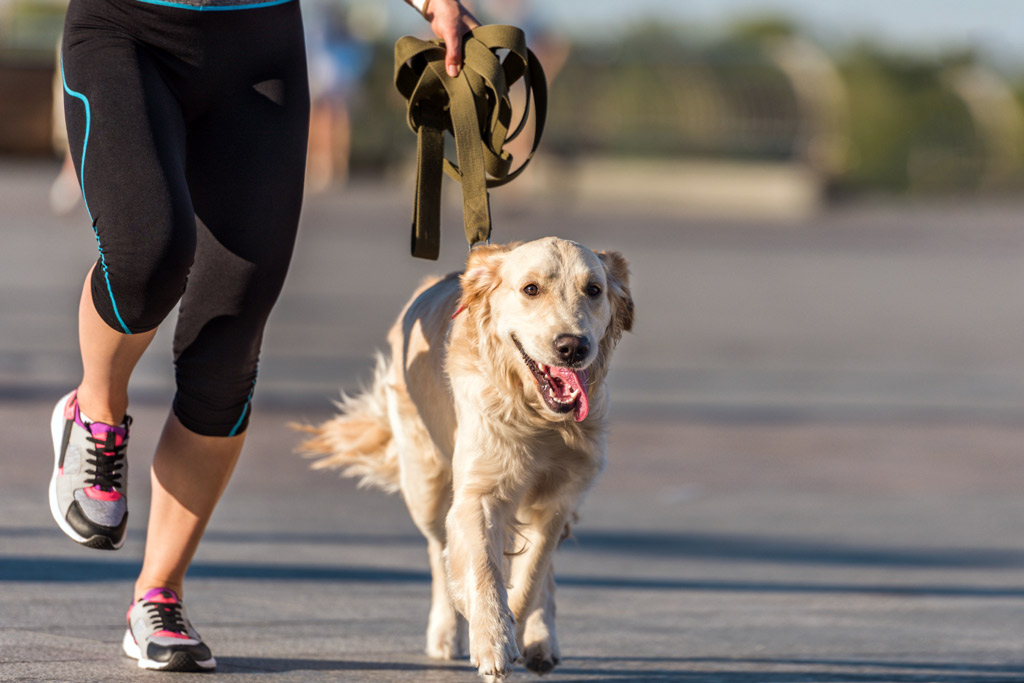
#4 – Hiking
For the more adventurous and outdoorsy dog parent, this a wonderful activity that provides lots of mental and physical stimulation for your pooch.
When I was younger, I used to go mountain climbing and hiking every weekend. My two dogs at the time, Lagun (a Pyrenean Mastiff) and Boss (a Boxer), would come along when appropriate for them.
With Lagun, we climbed the highest mountain in the Iberic Peninsula, the Mulhacén (3,479 m). He thrived in the snow and he was a great aide for us on that trip as the mountain was still covered in snow that spring.
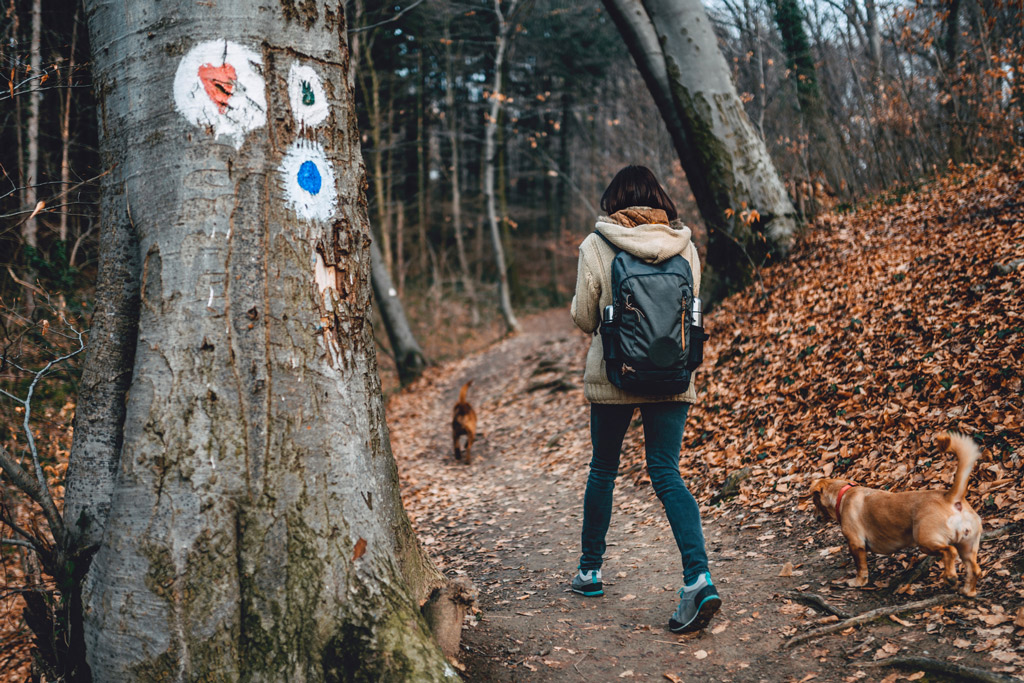
#5 – Agility
There are many dog sports that your dog would enjoy including agility.
It involves training your dog to do a number of obstacles on an agility course, such as
- Hurdles.
- Going through tunnels, and even
- Going across a seesaw.
And you are more than welcome to run alongside your dog. 😉
Consider enrolling your dog at a local club. You can either enter as a serious competitor or simply for fun!
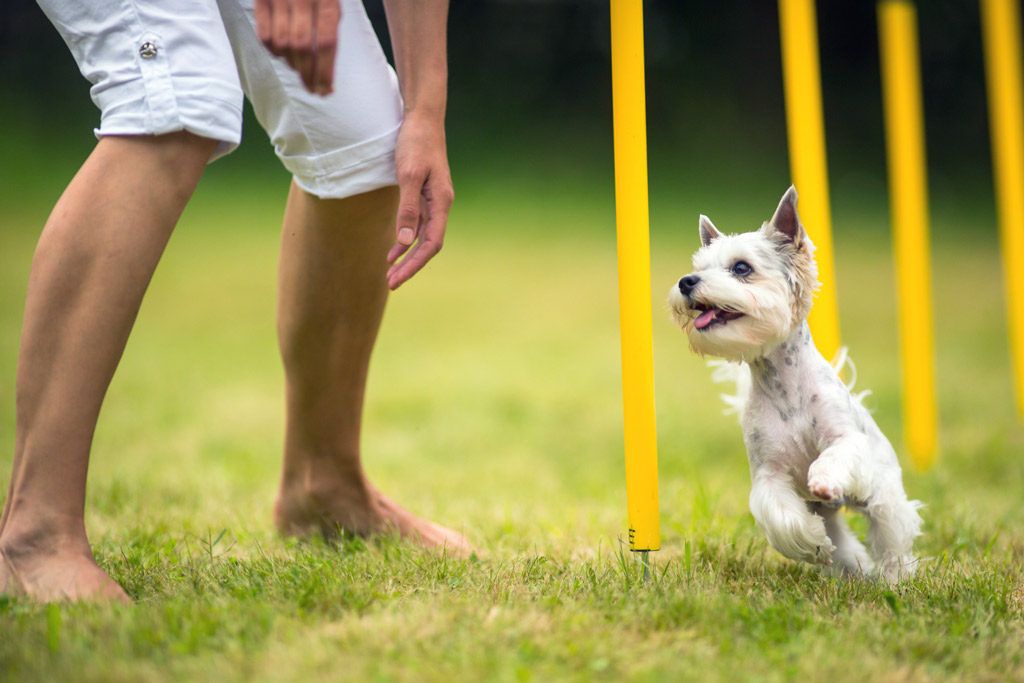
#6 – Yoga
Yes, you can do yoga with your dog!
Also known as “doga,” this exercise is meant to relax and calm you both. You can either do it at home or find out if there are any local classes. Dogs will definitely get their good share of mental stimulation as you will be teaching your pooch new tricks.
Alternatively, your pooch can join you in your human yoga session, like the cutie in the photos. 🙂
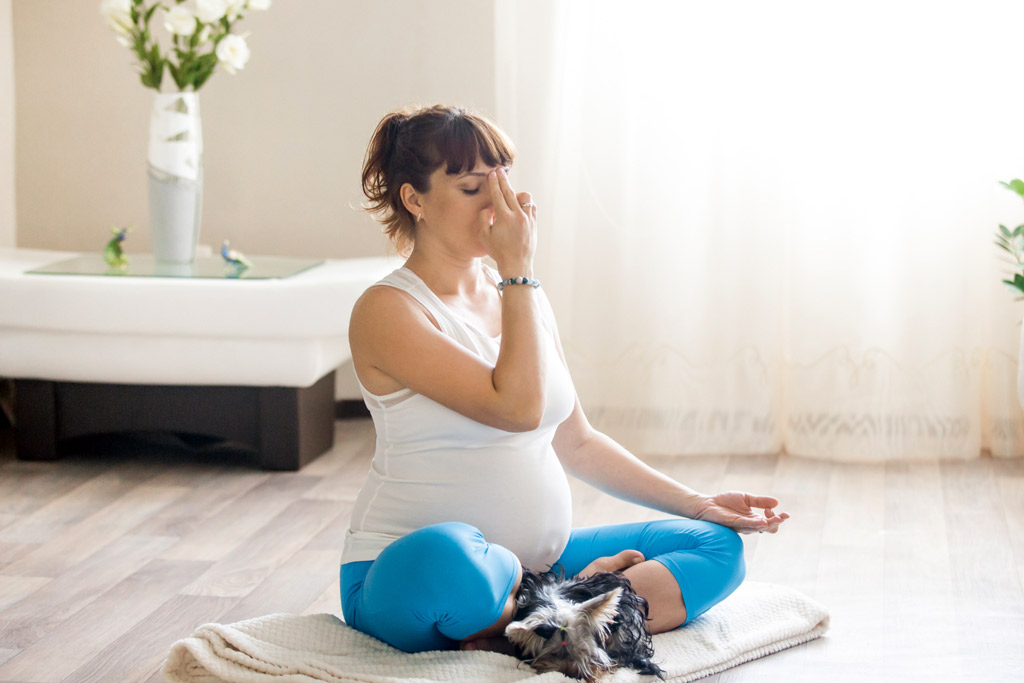
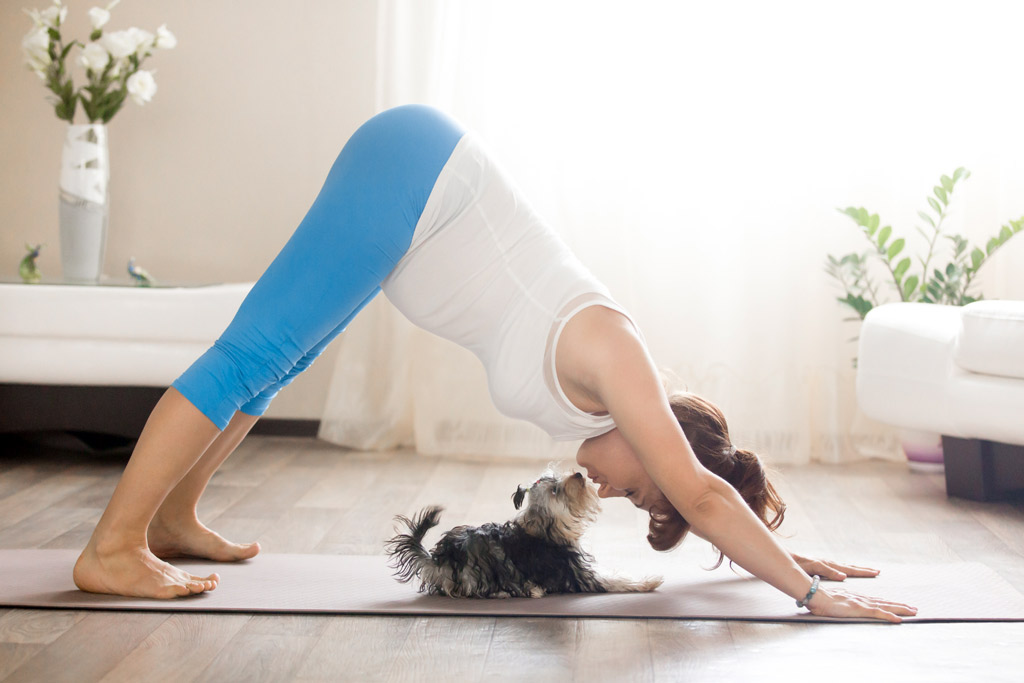
#7 – Swimming
Water sports like swimming is another form of exercise that you can practise with your doggy and a sport that targets your whole body too.
If your dog enjoys swimming and you have access to water, swimming can be a great solution for you and your pooch. Swimming is a low-impact exercise and also works great for dogs with joint problems.
Insider Tip: Take your dog to swimming classes before letting her swim. Also, she should wear a life jackets for her safety.
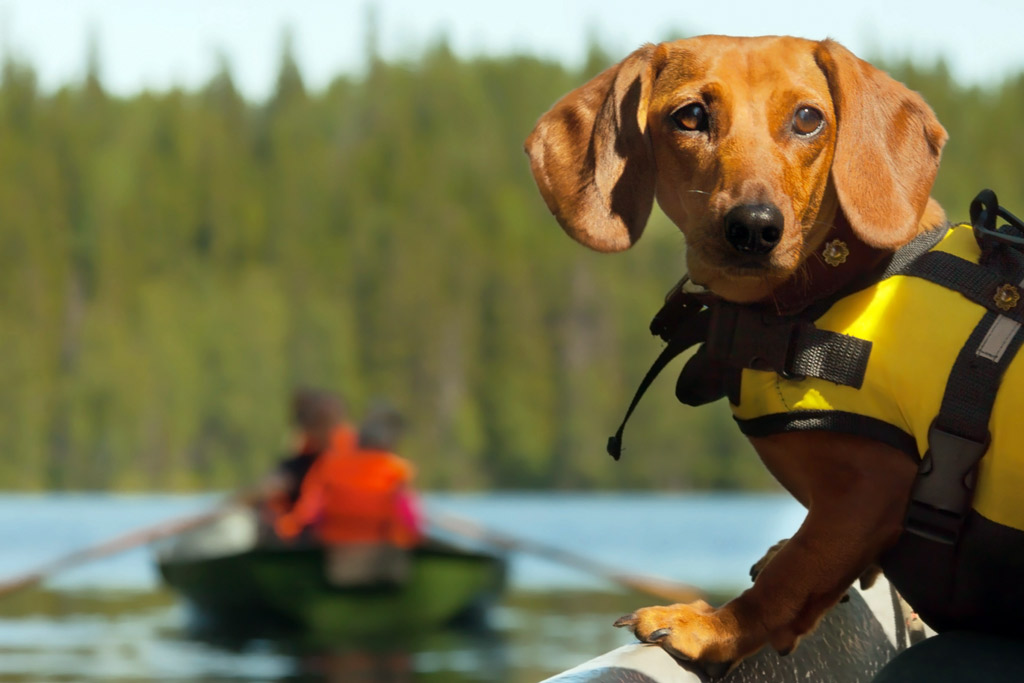
#8 – Dancing
Love to dance?
Engage your pooch in your next session. You can choreograph a dance routine that will have your pooch running between your legs and performing other tricks.
Dancing is a great workout that helps you develop greater stamina, better balance, lower blood pressure, and improved muscle tone and bone density.
Think your pooch will like it?
Funny story: Baxter (a White West Highland Terrier, “Westie” for short) got excited and circled around my partner and me every time we were dancing at home. For sure he enjoyed jumping around with us!
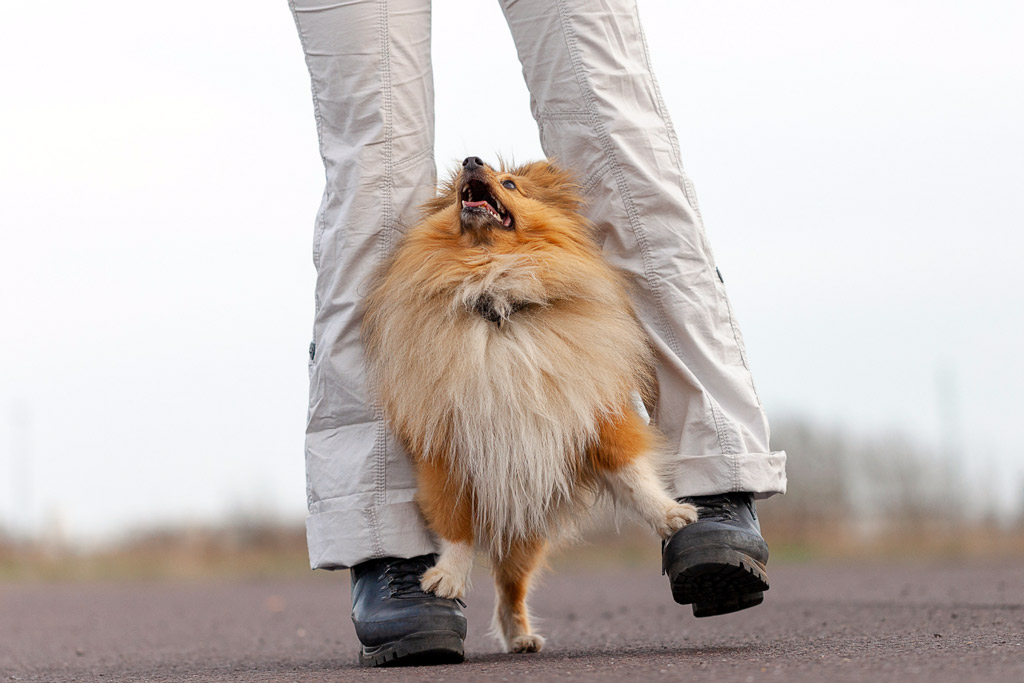
#9 – Football or Soccer
If you enjoy playing football, let your pooch join you in the backyard.
Dogs that enjoy fetching and playing with balls can be an asset for a one-on-one match. Pass the ball to your dog, and let her pass it back with her nose or paws (or however else she chooses, as long as the ball is getting passed back!).
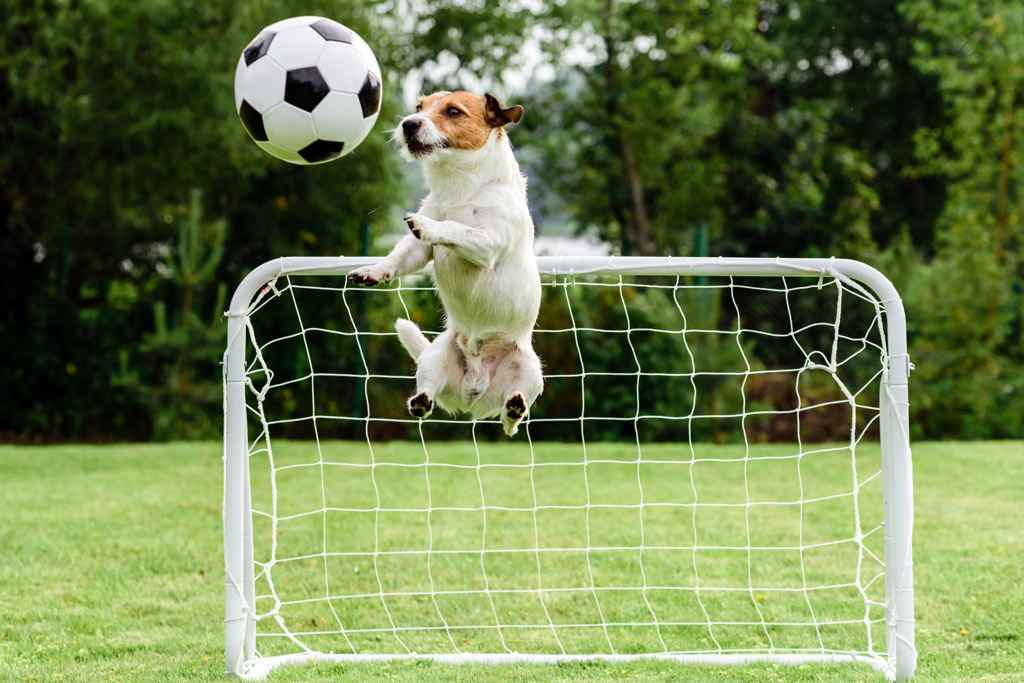
10 – Rollerskating
As I said, there are many sports where your dog can tag along ;).
Just make sure you gradually introduce her into it and keep an eye on her safety.
Once your dog knows how to walk properly on the leash, you can get your rollerskates on. Think of it as the next level of leash training. And hopefully, you know how to rollerskate!
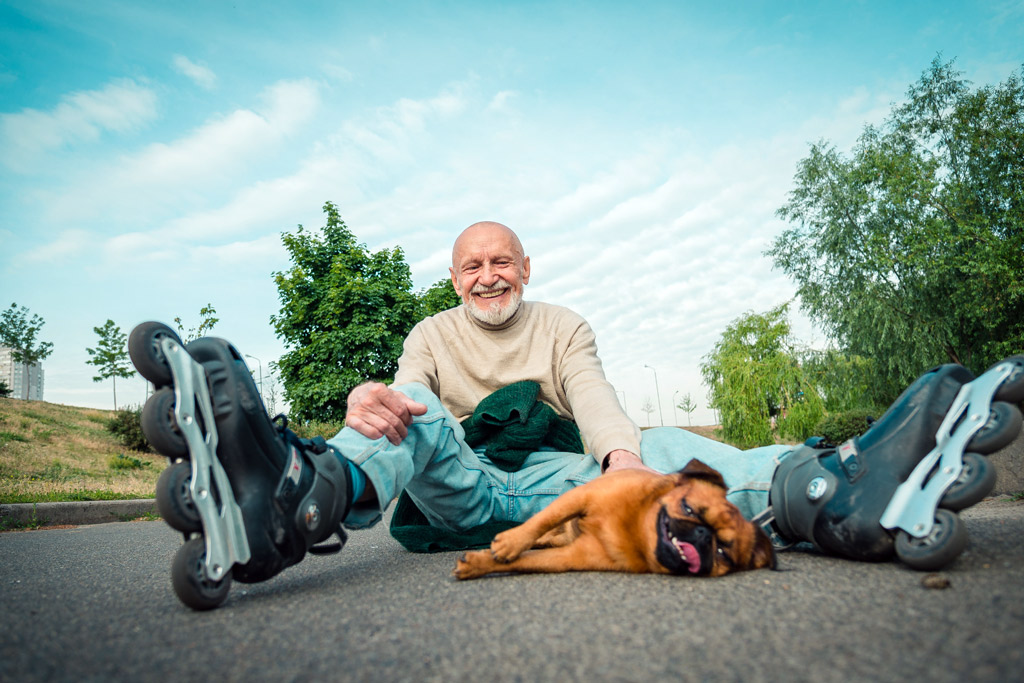
11 – Cycling
Finally, it’s time for cycling, although I bet there are other options to exercise with your furry friend.
For cyclers, bringing your pooch along can be a great way to spend time together plus get some exercise done.
Like running, get your dog used to the exercise gradually.
Insider Tip: Cycling on the road is dangerous. You probably want to opt for bike paths in the city (if legal) or a trail in the countryside.
Plus, when your pooch is tired or doesn’t feel like it, she can always come along in your bike basket, if she can fit in.
